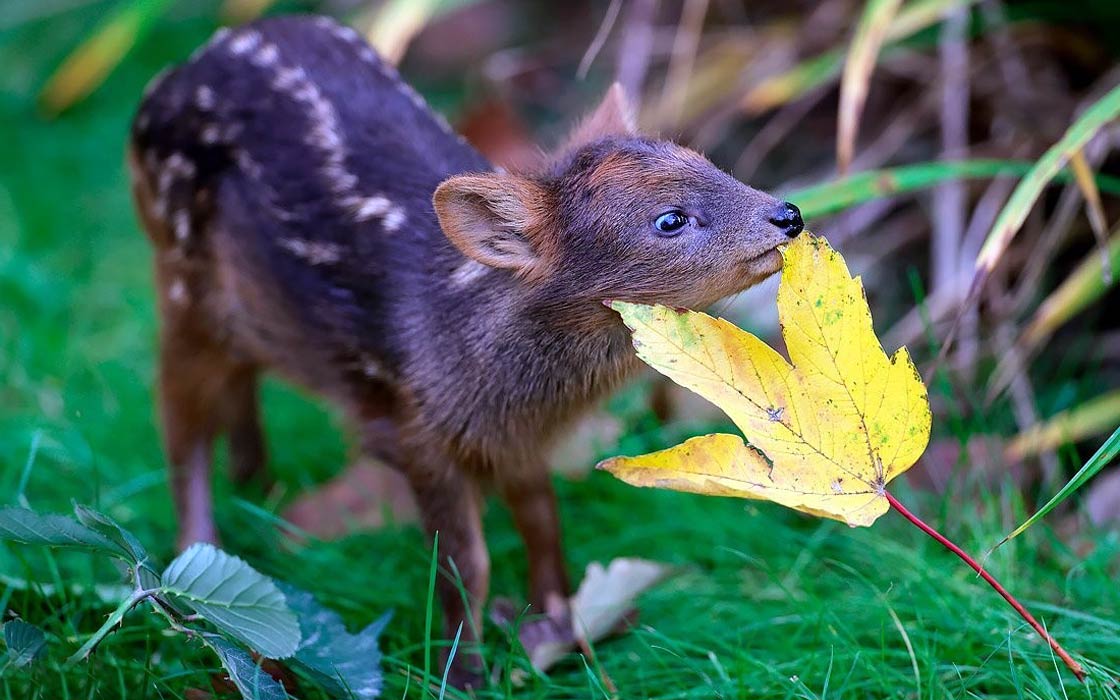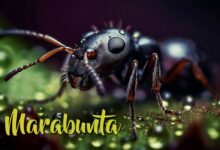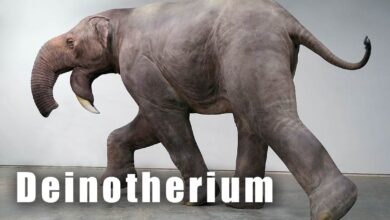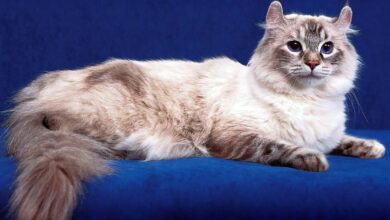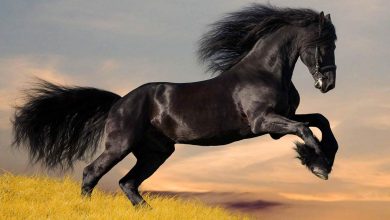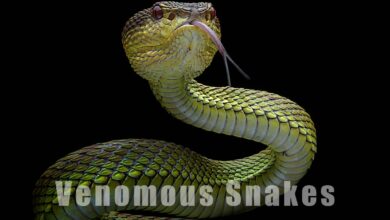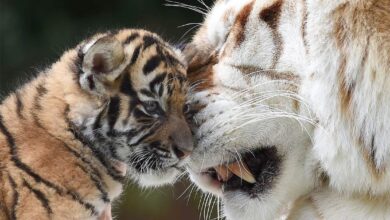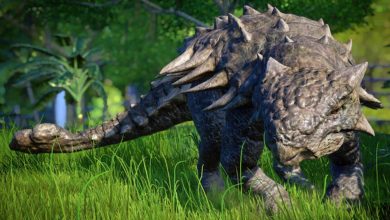Pudu (Pudú) – the world’s smallest deer
European and North American representatives of the deer family are characterized by considerable size and impressive antlers. Accustomed to such a sight, we may be amazed when we see a South American representative of the family – the pudu, the size of which is more similar to a dog than a deer.
Classification
- Kingdom: Animalia
- Phylum: Chordata
- Class: Mammalia
- Order: Artiodactyla
- Family: Cervidae
- Subfamily: Capreolinae
- Genus: Pudu
- Species:
- Southern pudu (Pudu puda)
- Northern pudu (Pudu mephistophiles)
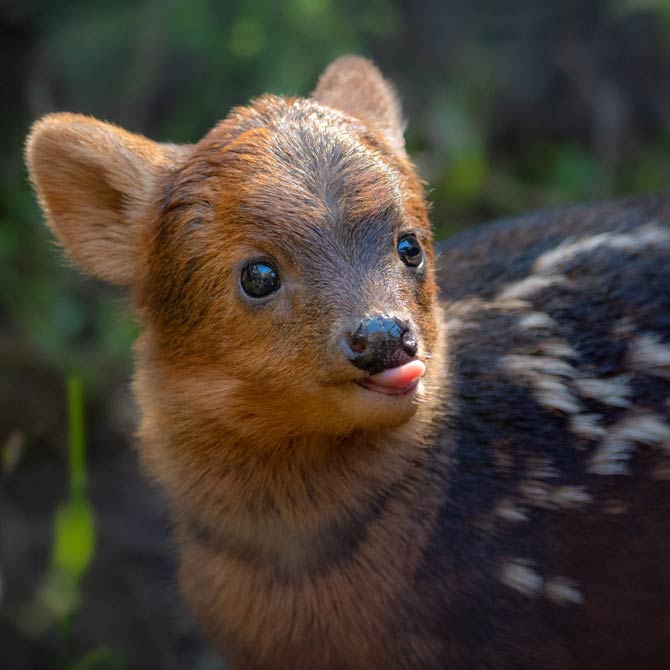
2 types of pudu are classified:
Northern Pudu (Pudu mephistophiles)
It lives in the Colombian, Peruvian and Ecuadorian Andes. It is probably the smallest deer in the world, measuring 32 – 35 cm (13 – 14 in) high at the withers and weighing 3.3 – 6 kg (7.3 – 13.2 lb). The antlers are also small, reaching approx. 6 cm in length, growing towards the back. It has a lighter coat (dark brown, chestnut with a hint of red) than its southern relative, but the snout is darker than the rest of the body. It also prefers higher altitudes than the southern pudu, it lives at 2,000 – 4,000 m (6,560 – 13,100 ft) above sea level.
Southern pudu (Pudu puda)
Known better than northern pudu. It is found in the southern Andes (Chile and Argentina) and is also slightly larger than its northern cousin; it is 35 – 45 cm (14 – 18 in) high at the withers and weighs 6.4 – 13.4 kg (14 to 30 lb). The antlers are also longer, measuring 5.3 – 9 cm, resembling the horns of the mountain goat (Oreamnos americanus). The fur takes on a chestnut-brown shade, in front of the body it tends to form clumps slightly covering the antlers. It chooses areas located at an altitude of approx. 2000 m (6,600 ft) above sea level.
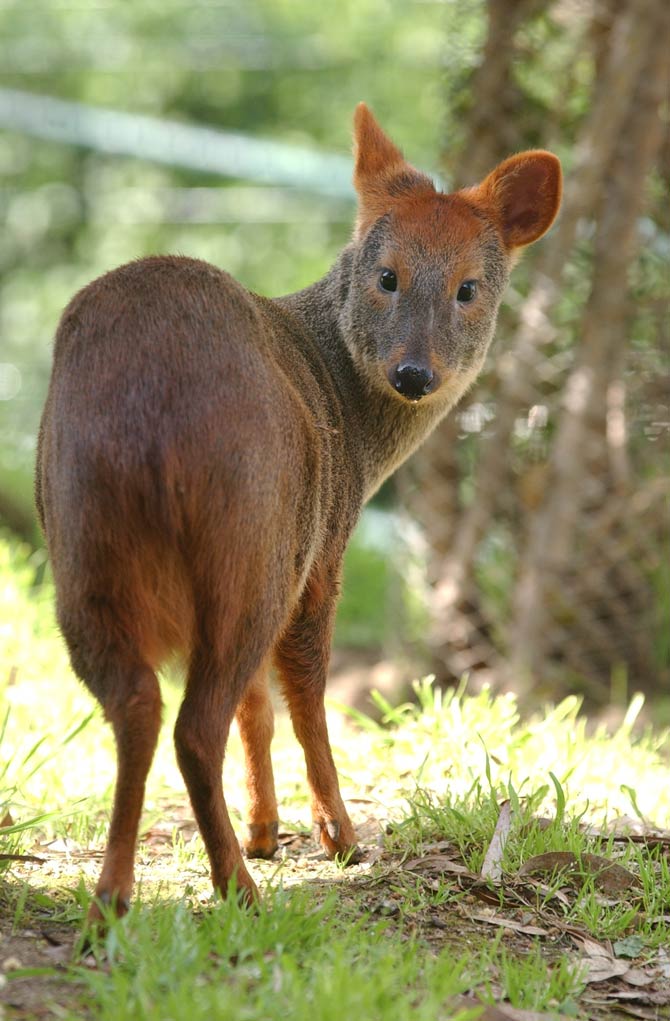
Habitats
It lives in the humid temperate forests of South America, where dense thickets and bamboos provide protection against predators. In the climate in which it lives, there are usually two seasons: humid, moderately frosty winter and dry summer.
Characteristic
The torso is bulky and slightly elongated, supported on four short and slender legs. The body length reaches 85 cm, and it weighs an average of 12 kg (26.5 lb), but the record holder has reached over 13 kg (28.6 lb). The eyes are round and small, although quite large in relation to the body. The nose is large, round or oval, the ears are also rounded, 7.5 – 8 cm long. Sexual dimorphism includes the absence of antlers in females, while males have short, unbranched antlers (which is rather unusual in deer) which they shed every year. As a rule, it is 6.5 – 7.5 cm long and protrudes between the ears.
The hooves are small, the tail is short (4 – 4.5 cm / 1.6 – 1.8 in), and the color varies depending on the season, sex and genes. In winter, fur is usually long, stiff, with a reddish-brown or dark brown shade. With age, the hair on the neck and shoulders becomes grayish-brown in the winter.
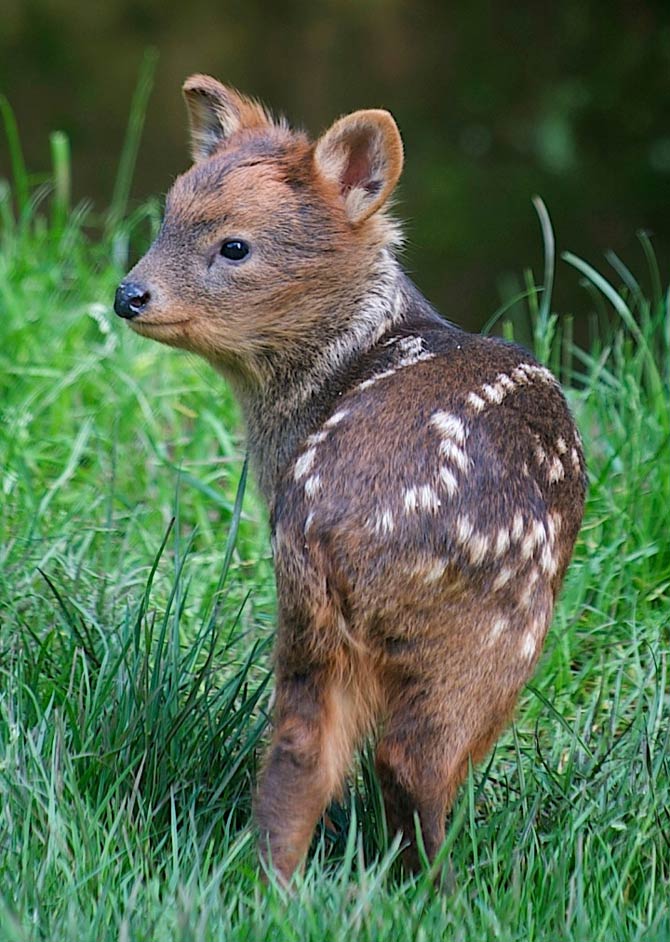
Diet and feeding method
Pudu is an unrepentant herbivore. He likes vines, leaves from low trees and shrubs, juicy sprouts, herbs, ferns, flowers, buds, bark and fruit lying on the ground. Since it eats leaves rich in large amounts of water, it can survive without access to a water reservoir for a long time.
Due to its low height, it has some difficulty finding food, but is doing quite well; it stands on its hind legs, picking up the scent of food in the air. Females and youngsters gnaw on the bark, and older males use antlers to strip it. Sometimes he leans his front legs against a tree, pushing against it until it shakes off the leaves. Pudu can climb the trunk to reach higher branches or it bends young bamboo, which it then climbs, reaching higher parts of the tree.
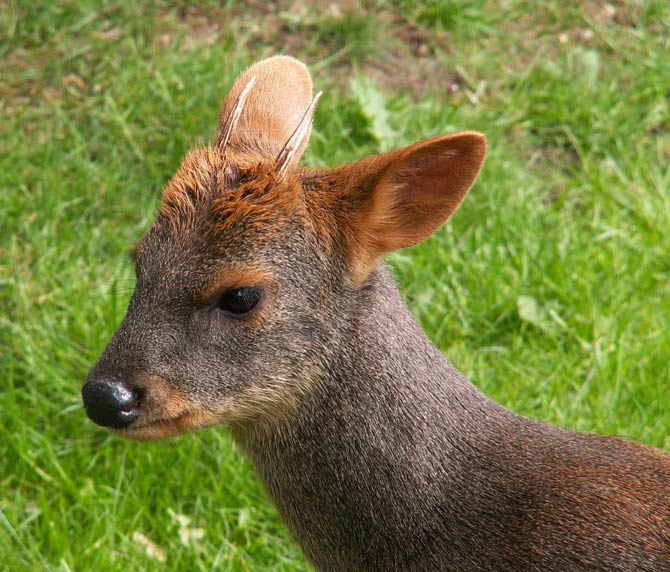
Social behavior and natural enemies
Though it seems cute and friendly, it is a loner, and its habits and disposition are largely a mystery due to his shyness. It is known that it can be active both during the day and at night. The individual area covers from 16 to 25 ha (40 to 62 acres), many of them consist of crossing paths trodden by small hooves. Since it is a territorial animal, it marks the boundaries of the acreage with feces, found on trails, near food and in resting places.
There are special scent glands on the muzzle that enable interpersonal communication. Apart from the odor left behind, the pudu does not interact with other representatives of the species, except during the breeding period. It is very easy to scare it, and when it is scared – it barks, fur ruffles in anger and the animal begins to tremble.
It falls prey to many predators, including South American eagle owls (Bubo), Andean wolf / culpeo (Lycalopex culpaeus), puma (Puma concolor) and other felids. It does not trust its surroundings, so it moves slowly and often stops in order to catch the smell of a predator from the air. Its greatest advantages are his high climbing skills, jumps and dizzying speed while escaping along a zigzag trail. Despite its cunning, it often dies young, because mothers do not always care for their offspring, and resistance to diseases is low.
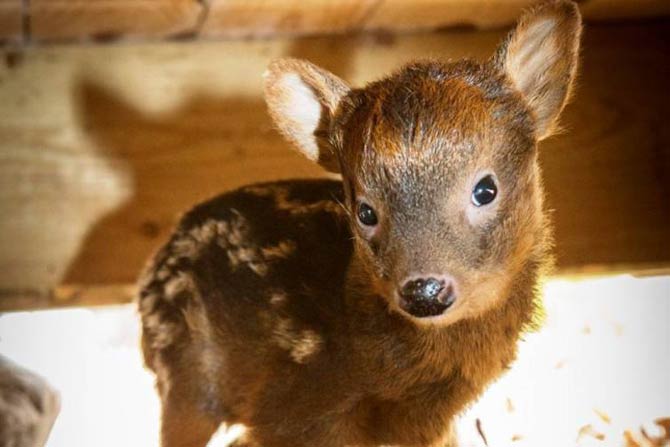
Reproduction
The mating takes place between April and May. Gestation lasts 202 – 223 days (approx. 7 months), after which the female gives birth to 1-2 cubs. The births, therefore, take place between November and January. The young weigh 700 – 1000 g (25 to 35 oz), and white spots appear on the back. After 2 months, the mother weaned them from milk. Females mature after about 6 months, males need 8-12 months for this. In the third month of life they take on “adult” colors, but they stay with their mother for about a year.
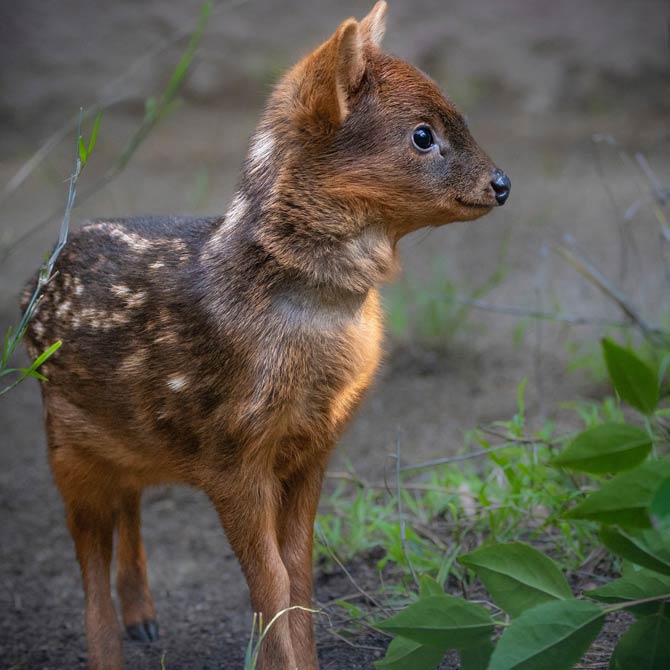
Detailed data and dimensions / size
Pudu (Pudú)
- Body length: up to 85 cm (33 in)
- Height at the withers: 32 – 44 cm (13 – 17 in)
- Weight: 3.3 – 13.4 kg (7.3 – 30 lb)
- Length of the tail: 4 – 4.5 cm (1.6 – 1.8 in)
- Length of the antlers: 5.3 – 9 cm (2.1 – 3.5 in)
- Lifespan: 8-10 years in the wild
Northern pudu (Pudu mephistophiles)
- Height at the withers: 32 – 35 cm (13 – 14 in)
- Weight: 3.3 – 6 kg (7.3 – 13.2 lb)
- Length of the antlers: approx. 6 cm (2.4 in)
Southern pudu (Pudu puda)
- Height at the withers: 35 – 45 cm (14 – 18 in)
- Weight: 6.4 – 13.4 kg (14 to 30 lb)
- Length of the antlers: 5.3 – 9 cm (2.1 to 3.5 in)
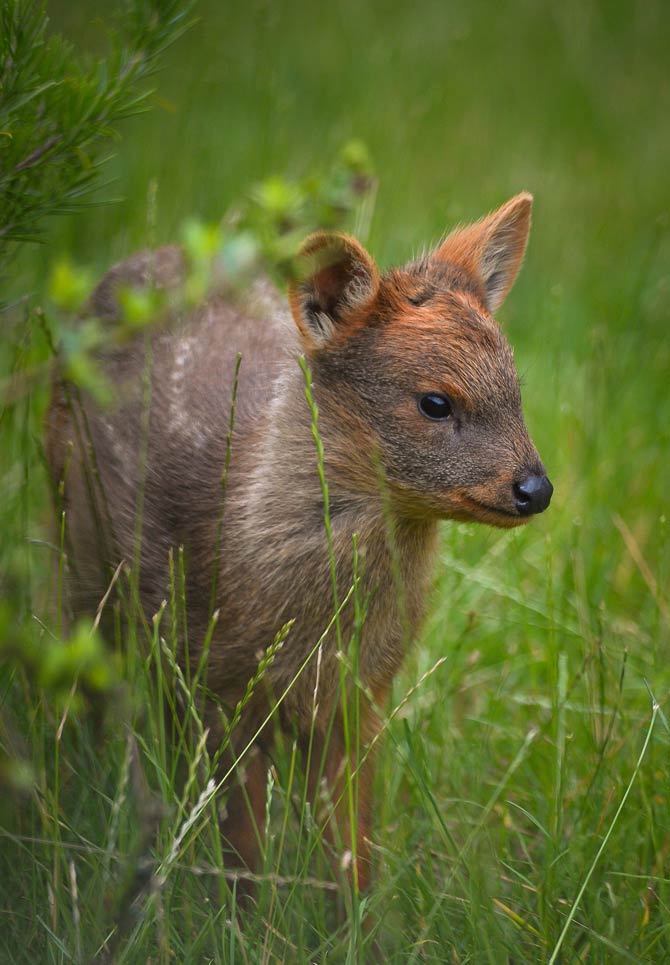
Pudu – interesting facts
- In the 19th century, the pudu was classified into the Capreolinae subfamily (also known as New World deer). The term Pudu comes from the Mapuche language used by the Chilean people – Mapuche. Since the pudu lives on the slopes of the Andes, it is also called the Chilean mountain goat.
- The northern pudu is considered to be the smallest representative of the deer in the world.
- The longest-lived pudu died at the age of 15 years and 9 months.
- A popular rumor has it that a frightened animal often dies of a fear-induced heart attack.
- Cubs weighing less than 600 g and more than 1000 g generally die.
- Pudu is threatened with extinction due to habitat destruction (deforestation), collisions with vehicles, as well as from illegal exports and treatment as a pet. It very often falls prey to hunters hunting for meat. Parasites transmitted from hunting dogs are a great threat. Unfortunately, these exotic mammals are very susceptible to parasitic diseases.
- Similar in size to the pudu, Putao muntjac (Muntiacus putaoensis) was discovered in 1997 (50 cm (20 in) at the withers and approx. 11 kg (25 lb) in weight).

Recommended
- Asian golden cat
- Lion vs tiger
- Tsavo lions
- Barbary lion
- Siberian tiger
- Bengal tiger
- Sumatran tiger
- Indochinese tiger
- Malayan tiger
- Tigers
- White tigers
- Lions
- White lions
- Liger
- Animal fights
- American lion
- European cave lion
- Smilodon – Saber-toothed tiger
- Big cats
- Black panther
- Leopard
- Snow leopard
- African Lion
- Fastest animals
- Fastest birds

